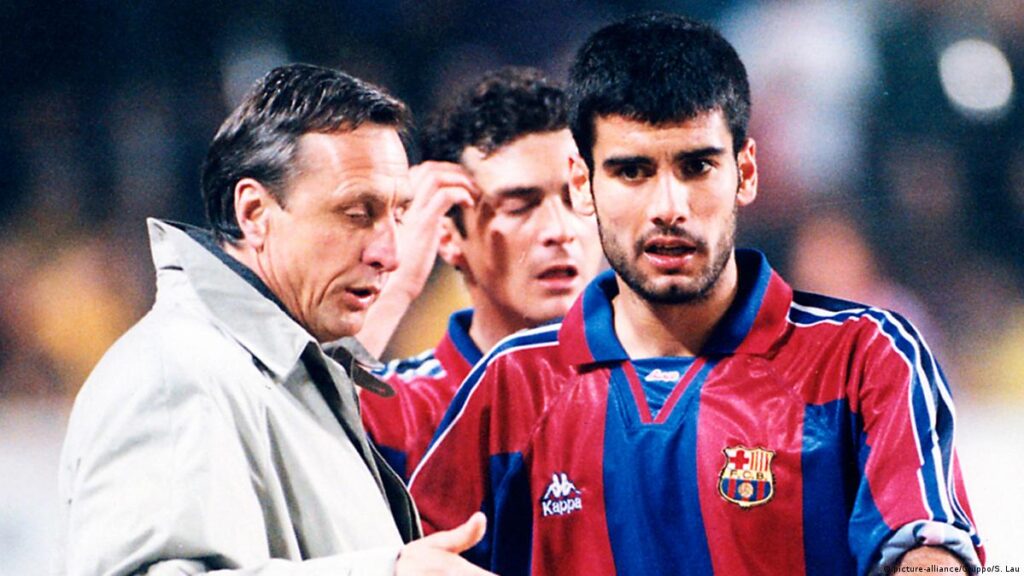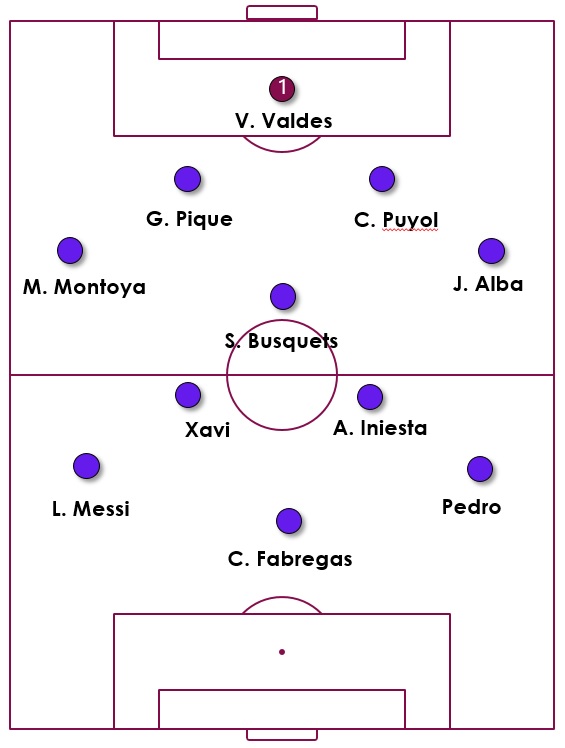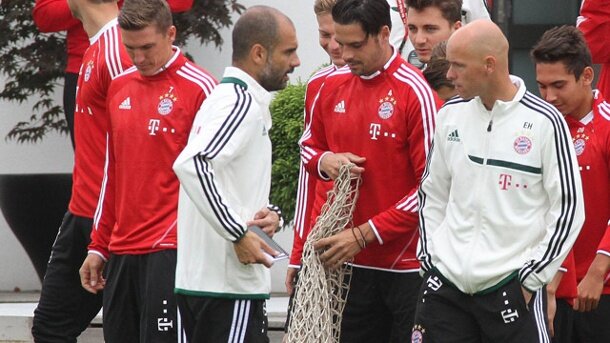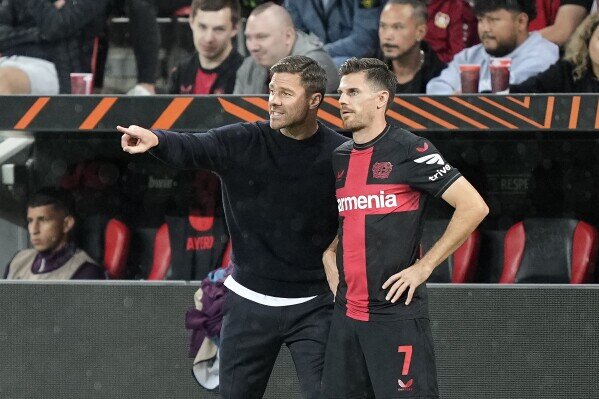When I first come across Tiki-taka, it was like witnessing a symphony on the football field. I remember watching Barcelona under Pep Guardiola’s guidance, effortlessly controlling matches with their insane high percentage of possession and fluid movement. The way they maintained control of the ball, patiently searching for openings, left a permanent impression on me. It wasn’t just about winning; it was about dictating the rhythm, dominating the game, a ballet of football where every player was an integral part of the performance.
As a coach, Tiki-taka has deeply influenced my approach to the game. I’ve come to appreciate the importance of technique, spatial awareness, and quick decision-making. Implementing aspects of Tiki-taka tactic and of course Positional Play into my football coaching philosophy, I emphasize the value of possession-based football, encouraging my players to think ahead, anticipate movements, and work as a cohesive unit.
Tiki taka isn’t just a style of play; it’s a mindset that values control, precision, and teamwork. It has taught me the beauty of simplicity in football, where every pass, every movement, contributes to the larger strategy of dominating the game on and off the ball.
This article will get into the basics of playing as a number 4 in football, exploring the skill sets, tactical responsibilities, and the impact of modern football trends on this crucial defensive role.
Disclosure: Please note that some of the links below area affiliate links and at no additional cost to you I will earn a commission. Know that i only recommend products services and brands i have personally used and stand behind. When you use one of my affiliate links, the company compensates me, which helps me run this blog and keep my in -depth content free of change for readers (like you). Read our disclosure for more info.
Table of Contents
Origins of Tiki-taka
To understand Tiki-taka, we must delve into its origins. The roots of this captivating style trace back to the Netherlands and the concept of “Total Football” introduced by Rinus Michels. However, it was Johan Cruyff, both a disciple and a master of Total Football, who played a pivotal role in its evolution.
The seeds of Tiki-taka were planted in the 1970s with the Ajax and Dutch national teams. They emphasized fluid movement and positional interchange, which laid the groundwork for future innovations. This approach prioritized skillful passing and off-the-ball movement, trademarks of what would later become Tiki taka soccer.
Johan Cruyff’s influence on Tiki-taka cannot be overstated. As a player and later as a coach, Cruyff brought his Total Football philosophy to FC Barcelona in the late 1980s. His tenure at Barcelona saw the development of a youth academy, La Masia, which would become a breeding ground for Tiki-taka practitioners.
FC Barcelona’s Dominance
Barcelona truly embodied Tiki-taka under Pep Guardiola’s leadership from 2008 to 2012. A former player under Johan Cruyff, Guardiola refined and perfected this style, steering Barcelona to unparalleled success. He evolved Tiki-taka into a more comprehensive Positional Play, establishing a philosophy that has since influenced numerous coaches worldwide.

During Guardiola’s ear, Barcelona achieved remarkable achievements, including winning the UEFA Champions League twice and dominating La Liga. The team’s ability to control games through possession and intricate passing left opponents chasing shadows. This era cemented Tiki-taka’s place in football history. Luis Enrique and Tito Vilanova continued Guardiola’s path and led Barcelona to many victories in the years that followed.
Key Players in Tiki-taka’s Success
Central to Barcelona’s success were players like Xavi Hernandez, Andres Iniesta, Sergio Bouquets and Lionel Messi, Barcelona’s False 9. Their exceptional technical skills and understanding of the game allowed them to execute Tiki-taka to perfection. These players did not just ring in a machine but artists painting on the canvas of the football pitch.
Tactical Mastery
Under Guardiola, Barcelona’s tactical approach was detailed planned, and executed. The team employed a high defensive line and aggressive pressing to regain possession rapidly. This intensive pressure prevented opponents from establishing their rhythm and often forced them into making mistakes. The midfield trio of Xavi, Iniesta, and Sergio Busquets was pivotal in this strategy. Their vision and composure allowed them to recycle possession efficiently and transition smoothly from defense to attack.
The Role of La Masia
La Masia, Barcelona’s famed youth academy, played a crucial role in the rise of Tiki-taka. Many of the key players, including Xavi, Iniesta and Messi, were products of this system. The academy instilled the principles of Tiki-taka from a young age, ensuring a seamless integration into the first team. This homegrown talent, coupled with strategic signings, created a squad perfectly suited to Guardiola’s vision.
On a mild evening of November 25th, 2012, FC Barcelona traveled to Valencia to take on Levante, a match expected to be relatively routine following their recent 3-1 defeat at the same venue. However, beyond a commanding 4-0 victory, Barcelona achieved a historic milestone that stands among the proudest moments in the club’s brilliant history.
Under Tito Vilanova, Barcelona began the game with just one player not from their renowned youth academy, La Masia: right-back Dani Alves. When Alves was substituted due to injury after fifteen minutes, Martin Montoya came on, marking another significant milestone for a club deeply rooted in the culture and traditions of its autonomous region. The moment was highlighted by the fact that Barcelona fielded 11 players developed through La Masia, a triumph celebrated within the world of football and the club’s academy. This is a record that, due to the enormous financial evolution of football, will be difficult for any team from the top leagues to repeat.
It’s worth noting two exceptions from a Catalan perspective: Lionel Messi, born in Rosario some 6,000 miles away across the Atlantic, and Andres Iniesta, whose hometown of Fuentealbilla is closer to Levante than to Barcelona itself. Nonetheless, the homegrown starting XI comprised Victor Valdes, Martin Montoya, Carles Puyol, Gerard Pique, Jordi Alba, Xavi, Sergio Busquets, Andres Iniesta, Pedro, Lionel Messi, and Cesc Fabregas.

November 25th, 2012, Levante vs FC Barcelona after 15′
Historic Achievements
The period from 2008 to 2012 saw Barcelona reach unprecedented heights. The 2008-09 season was particularly memorable, as Barcelona won the historic treble: La Liga, the Copa del Rey, and the UEFA Champions League. The Champions League final against Manchester United showcased Tiki-taka at its finest. Barcelona’s dominance home and away from Camp Nou was evident as they controlled possession and created numerous scoring opportunities, ultimately winning 2-0.
Barça was the best team ever to line up against my Manchester United sides
Alex Ferguson
Influence Beyond Barcelona
Barcelona’s success had a ripple effect across Europe. Clubs and national teams began to take note of Tiki-taka’s effectiveness. Guardiola himself carried the philosophy to Bayern Munich and later to Manchester City, adapting and evolving the style to suit different leagues and challenges. The influence of Tiki-taka can be seen in the tactical setups of many modern teams, emphasizing the importance of possession and positional play.
Tiki-taka’s influence is not confined to Spain. International teams have adopted and adapted the style, achieving success on the global stage. The Spanish football and the national team, under coaches like Luis Aragones and coach Vicente del Bosque, used Tiki-taka to win the 2008 and 2012 European Championships and the 2010 FIFA World Cup. Their dominance was a testament to the style’s effectiveness at the highest level.
Countries like Germany and even club teams in South America have incorporated Tiki-taka principles and similar passing style, achieving notable success. The style’s global reach underscores its versatility and universal appeal.
TACTICS MANAGER PRO – CREATE DRILLS, TACTICS AND SESSION PLANS (APP)

Coaching software that enables you to create your own practices, tactics and plan sessions
- “I’ve been a Tactics Manager user for many years, and continue to find it extremely helpful in laying out training sessions and playing with tactical concepts. Would love to see animation options in the future!”
- “I use this on a PC and it is so easy to use. Makes my sessions look amazing and the beauty is that once you have done one activity it’s there for good. A couple of glitches with thumbnails but a great app.”
- “This software is the foundation for me and my organization for planning yearly programming. Simply amazing”
- “Perfect tool and help . Save your training in pdf files and share it , all the equipment you need in one application . Also if you need help they fix any issue you have and are very helpful . Thank you George”
Tactical Breakdown
To fully appreciate Tiki taka style, one must understand its tactical intricacies. It’s not just about short passes; it’s about creating space, maintaining shape, and relentless movement.
We do not pass to move the ball. We pass to move the opposition
Pep Guardiola
Key Principles
At its core, Tiki-taka relies on several key principles:
- Maintaining possession
- Pressing high when out of possession
- Quick, short passes to break down opposition defenses.
- It’s a game of patience and precision, where every pass has a purpose.
Maintaining possession is the cornerstone of Tiki-taka. Maybe this is the biggest difference to pure Positional Play, where a team can implement such a style of play without necessarily having much possession. Teams employing this style focus on keeping the ball as much as possible, moving it around to find openings. This constant ball circulation tires out opponents and reduces their chances of launching attacks.
Pressing high when out of possession is another critical element. Tiki-taka teams apply immediate pressure after losing the ball, aiming to regain possession quickly. This high press disrupts the opponent’s build-up play and forces errors, allowing the team to recover the ball in advantageous positions.
Quick, short passes are essential for breaking down opposition defenses. Tiki-taka emphasizes rapid, precise passing to maintain the flow of the game and create scoring opportunities. These short passes, often executed in tight spaces, require exceptional technical skill and awareness from players.
Positional Play
Positional play, or “Juego de Posición,” is fundamental to Tiki-taka. Players occupy specific zones on the pitch, creating superiorities and overloads and ensuring that passing options are always available. This creates triangles and diamonds, making it difficult for opponents to intercept the ball and disrupting their defensive organization.
In positional play, players must understand their roles and maintain discipline in their positioning. By adhering to this structure, teams can create numerical advantages in various areas of the pitch, facilitating smoother transitions and more effective ball control.
Impact on Modern Football
Tiki-taka’s influence extends far beyond FC Barcelona. It has shaped the tactics and philosophies of numerous teams and managers worldwide.
As with any dominant style, Tiki-taka has evolved. Modern iterations may incorporate more direct attacking elements, but the essence remains the same: control through possession and movement. It’s a testament to Tiki-taka’s adaptability and enduring appeal.
Pep Guardiola’s impact on modern football extends far beyond his achievements on the pitch with Barcelona. His innovative approach to coaching has inspired a generation of managers, shaping the way teams approach tactics, player development, and overall gameplay.
Erik ten Hag, the mastermind behind Ajax’s rebirth in European football, also reflected Guardiola’s influence. Ten Hag’s Ajax teams prioritized technical proficiency, high pressing, and rapid transitions – hallmarks of Guardiola’s tactical blueprint. The Dutchman described the two years he worked alongside Guardiola at Bayern Munich as ‘like winning the lottery’.

What is clear is that the Ten Hag vision of playing the game that is slowly unfurling at Old Trafford, and the attention to detail required to realize it, are influenced by those formative years watching Guardiola hard at work on the next training pitch. Even though the result may not be what fans of Manchester United wants, the vision of Ten hag on how his team would like to play is obvious.
Similarly, Xabi Alonso, former midfield maestro turned manager, has embraced Guardiola’s principles at Real Sociedad and this season at Bayern Leverkusen. Alonso emphasizes intelligent pressing and building from the back, showcasing Guardiola’s enduring impact on how the game is played and coached at the highest levels.

Mikel Arteta’s coaching journey has been deeply influenced by his time under Pep Guardiola. From his playing days at Arsenal to his role as Guardiola’s assistant at Manchester City, Arteta absorbed Guardiola’s emphasis on possession-based football, tactical sophistication, and meticulous attention to detail.
Under Guardiola, Arteta learned the importance of structured build-up play, pressing as a unit, and creating numerical advantages in key areas. These principles are evident in Arteta’s coaching at Arsenal, where he strives for proactive, disciplined play characterized by precise passing and strategic positioning.
Guardiola’s mentorship also shaped Arteta’s leadership style and commitment to player development. Like Guardiola, Arteta prioritizes nurturing a positive team culture and maximizing individual potential. As Arteta continues to grow as a coach, Guardiola’s influence remains a cornerstone of his approach to achieving success both tactically and culturally at Arsenal.
Roberto De Zerbi is another coach heavily influenced by Tiki-Taka, the Positional Play, and Guardiola. “I became a coach because of him,” he said to Sky Sports. “I don’t know if it’s a good thing or not, but I became a coach for him because I loved his Barcelona and I studied him a lot.”
These managers continue to evolve Guardiola’s legacy, adapting his methods to suit their own teams while perpetuating his revolutionary footballing philosophy.
Criticisms and Challenges
Despite its success, Tiki-taka has faced its share of criticisms and challenges. Some argue that it can be overly cautious and lack directness, leading to periods of possession without a purpose.
One of the main criticisms is that Tiki-taka can sometimes lead to “possession for possession’s sake,” where teams dominate the ball but struggle to create clear-cut chances. This has led to accusations of being boring or ineffective against well-organized defenses.
Several teams have devised strategies to counter Tiki-taka. Jose Mourinho’s Inter Milan famously nullified Barcelona in the 2010 Champions League semi-final with a disciplined, defensive approach. Similarly, Bayern Munich’s high pressing under Jupp Heynckes overwhelmed Barcelona in the 2013 Champions League.
Conclusion
Tiki-taka’s legacy in football is profound. It has transformed how the game is played and appreciated, emphasizing skill, intelligence, and teamwork. While it faces challenges and criticisms, its core principles continue to influence modern football. As teams and managers innovate, Tiki-taka’s future remains bright, promising to inspire and captivate football fans for generations to come.
FAQs
- What is Tiki-taka in football?
Tiki-taka is a football style characterized by short passing, fluid movement, and maintaining possession to control the game and create scoring opportunities.
- Who popularized Tiki-taka?
Johan Cruyff and Pep Guardiola were instrumental in popularizing Tiki-taka, especially during their respective tenures at FC Barcelona.
- Why is Tiki-taka effective?
Tiki-taka is effective because it emphasizes control of the ball and the game, making it difficult for opponents to gain possession and mount attacks.
- Which teams have successfully used Tiki-taka?
FC Barcelona and the Spanish national team are the most notable examples, achieving significant success with this style. Other clubs and international teams have also adopted its principles.
- What are the main criticisms and challenges of Tiki-taka?
Critics argue that Tiki-taka can lead to periods of sterile possession without creating scoring opportunities and can be countered by well-organized defensive teams.

